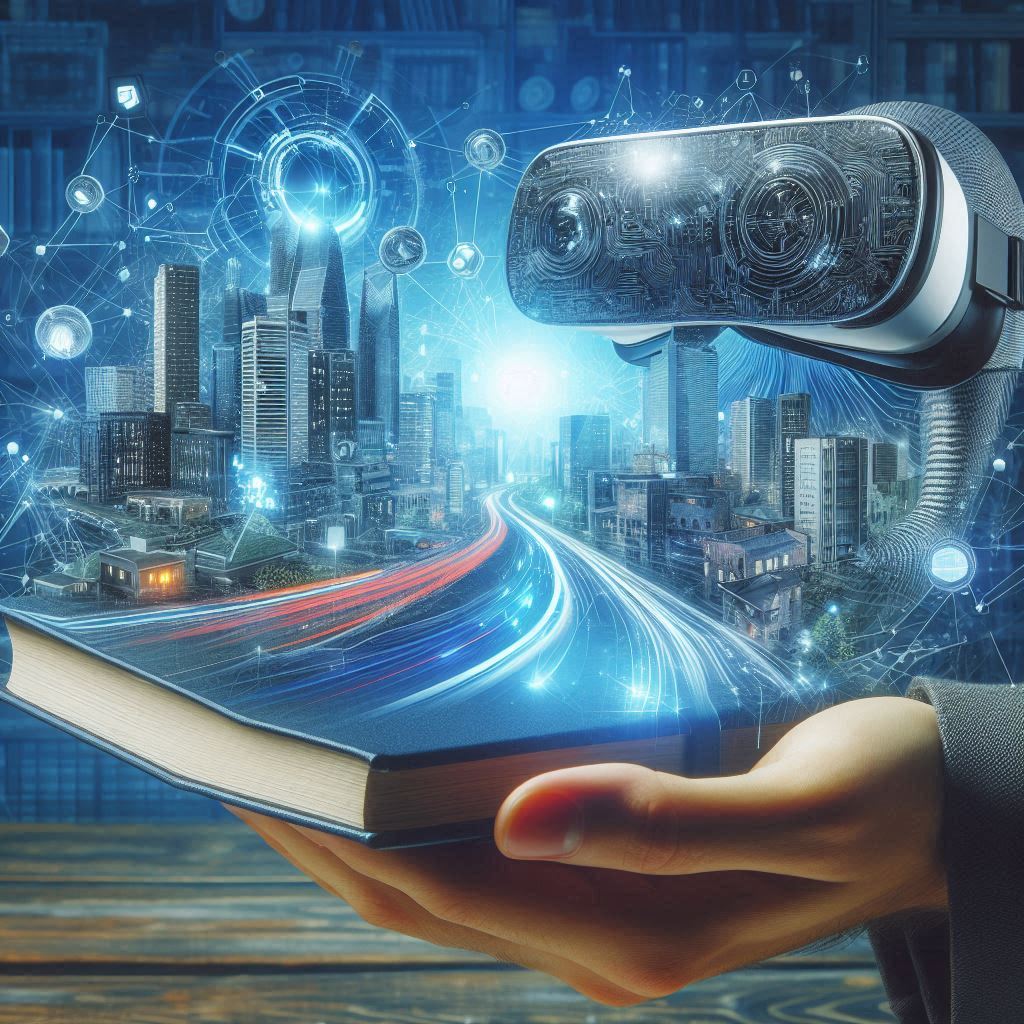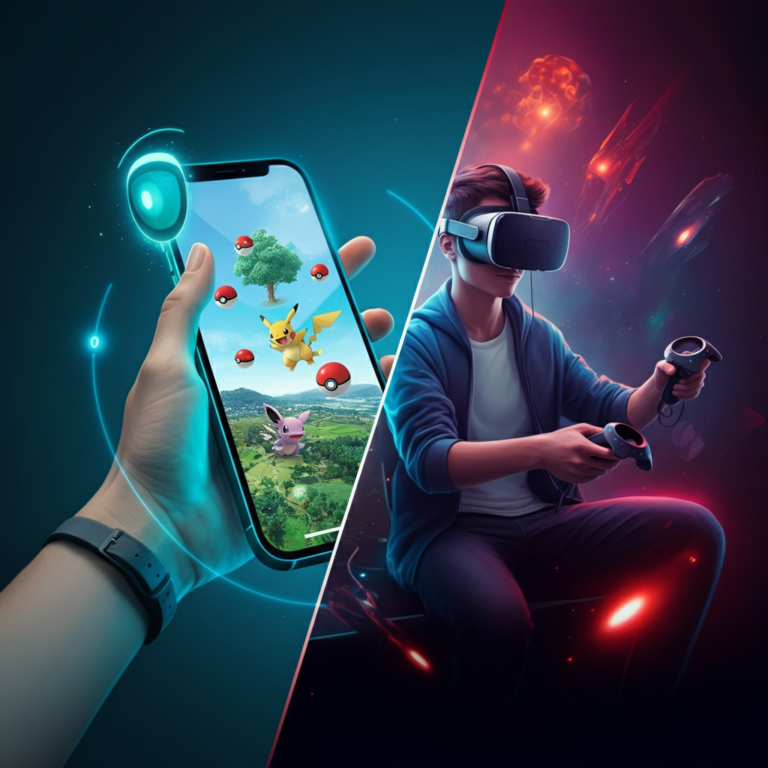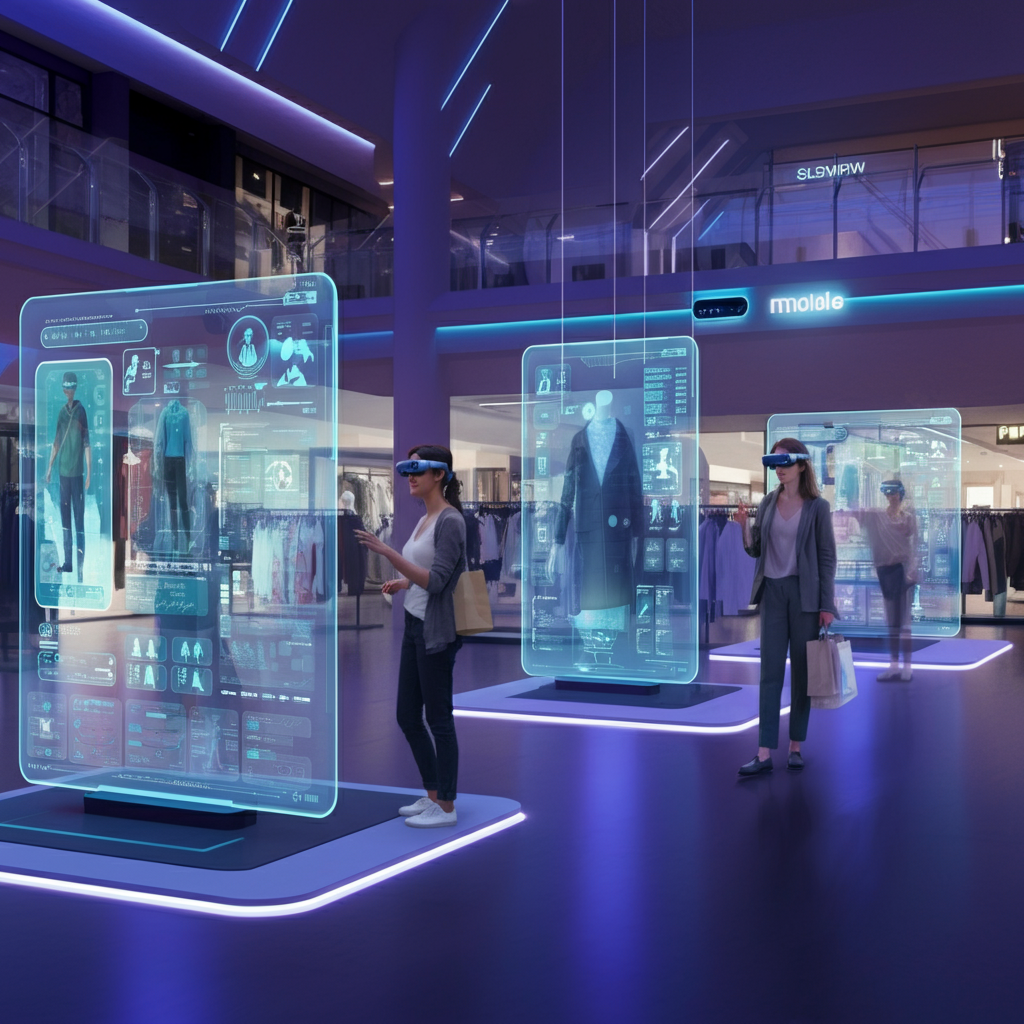AR vs VR: The terms “Augmented Reality (AR)” and “Virtual Reality (VR)” are increasingly being used in conversations about gaming, education, and tech innovation. But what exactly do they mean, and how are they different? Many confuse AR and VR, thinking they’re interchangeable. However, the Reality is that they offer distinct experiences, cater to various needs, and have unique technological requirements.
Suppose you’re a tech enthusiast, gamer, or educator curious about these technologies and their potential applications. In that case, this guide will clear up the confusion. We’ll break down the essential differences, discuss their similarities, and explore the future of AR and VR.
What Are AR and VR?
Before we dive into their differences, it’s essential to understand their core concepts.
Overview of AR vs VR
- Augmented Reality (AR) enhances your current Reality by overlaying digital objects, such as images or sounds, onto the real world. Think of it as adding a digital layer to your everyday surroundings.
- Virtual Reality (VR) creates an entirely immersive digital environment, completely disconnecting you from the real world and placing you inside a simulated one.
Why Understanding the Difference Matters
AR and VR technology are widely used across industries, from gaming to healthcare. Knowing the difference empowers you to make informed decisions, whether investing in tech, exploring new gaming experiences, or deciding how to incorporate these tools into education or business practices.
What Is Augmented Reality (AR)?
Augmented Reality enhances the physical world by integrating digital elements, typically in real-time. This means you can still see your surroundings while interacting with digital overlays.
Examples of AR in Everyday Life
- AR in Mobile Apps
Some of the most well-known examples of AR can be found in mobile apps. Snapchat filters, which can add dog ears or flower crowns to your face in real-time, are made possible by AR. Pokémon GO is another iconic use case, which overlays digital Pokémon into the real world via your phone camera.
- AR in Business and Education
AR is making waves in industries like retail and education. IKEA, for instance, uses AR to allow customers to visualize furniture in their homes before buying it. Similarly, AR tools in education provide students with interactive, 3D visualizations of everything from anatomy to historical landmarks.
What Is Virtual Reality (VR)?
Virtual Reality transports users into a completely digital world, immersing them in an environment that can be explored and interacted with.
Examples of VR in Everyday Life
- VR Gaming Experiences
Gaming is one of VR’s most popular use cases. VR headsets like the Oculus Quest and PlayStation VR allow gamers to enter fully immersive worlds, offering unprecedented engagement in games like Beat Saber and Half-Life: Alyx.
- VR in Training and Simulations
Beyond gaming, VR is now a key tool in professional training. VR provides lifelike simulations for pilots, medical professionals, and even industrial workers, offering a risk-free environment to learn and practice complex tasks.
Key Differences Between AR and VR
Though AR vs VR share technological similarities, several aspects set them apart.
Immersion Level
- AR: Enhances Reality by adding digital elements to it. For example, AR allows you to see animated characters in your living room while being aware of the actual room.
- VR: Creates an entirely separate virtual world. Users are wholly immersed, without visibility of the real world.
Required Devices and Technology
- AR: Requires accessible devices like smartphones, tablets, or AR glasses (e.g., Microsoft HoloLens).
- VR: More specialized hardware is needed, including VR headsets (e.g., Oculus, HTC Vive) and often controllers for physical interaction.
Use Cases and Applications
- AR: Often fulfils practical purposes, such as letting shoppers try on virtual clothes or helping students understand complex subjects.
- VR: Focuses on enrichment through immersive experiences, such as escaping into a game, attending virtual reality concerts, or even addressing psychological issues via therapy.
Accessibility and Cost
- AR: AR tends to be more accessible and affordable for the average user due to its reliance on devices like smartphones and readily available software.
- VR: VR is costlier, requiring investment in specialized equipment and often more space for setup.
Similarities Between AR and VR
Despite their differences, AR and VR share some key traits.
Both Use Advanced Technology
Both AR and VR rely on cutting-edge tech to deliver their experiences. AI, machine learning, and sensors play crucial roles in creating seamless interactions and realistic visuals.
Both Enhance User Experiences
Whether it’s making learning more engaging or improving customer experiences, AR and VR aim to elevate how we interact with content and our surroundings.
The Future of AR and VR
AR and VR continue to evolve, with new trends and combined applications reshaping their potential in various industries.

Emerging Trends in AR vs VR
Expect advancements in wearable devices, such as AR glasses and VR headsets, and expansion into industries like healthcare, real estate, and workplace collaboration. Enhanced processing power will also improve the realism of these experiences.
Potential for Combined Applications
Mixed Reality (MR), which combines AR and VR to create cohesive digital-physical interactions, is gaining traction. Imagine designing your dream home in AR and then stepping into that same model in VR for a 3D walkthrough!
Wrapping Up AR vs VR
Augmented Reality (AR) and Virtual Reality (VR) – Ar vs VR – are game-changing technologies that serve distinct purposes. AR enhances the real world with digital information, while VR immerses users in entirely new ones. Understanding these differences allows users, businesses, and educators to unlock their full potential.
AR’s accessibility and practical applications suit a broad audience, while VR’s immersive capabilities offer extraordinary experiences for gaming, training, and beyond. The future is bright, and the growing potential for these technologies to intersect promises even more exciting opportunities.
Are you eager to explore cutting-edge tech like AR and VR more? Stay informed by checking out our blog and aligning yourself with the latest trends in technology!





